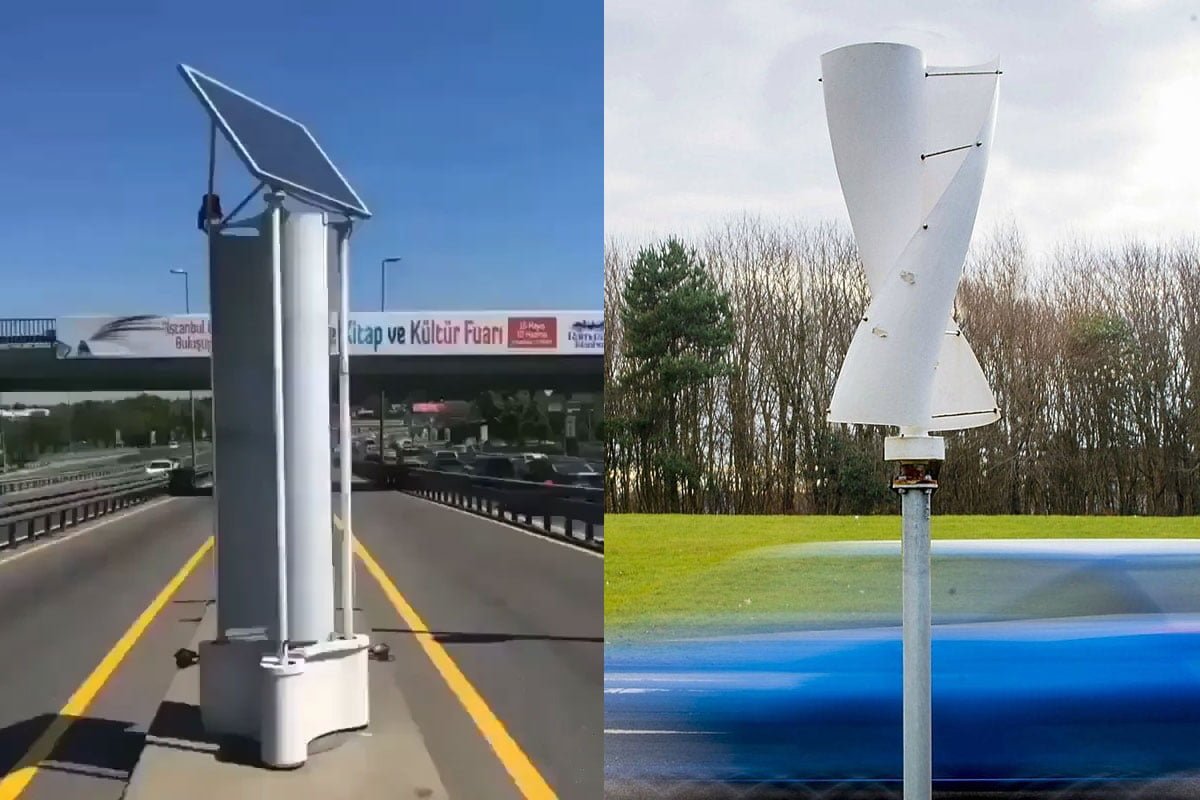Why are Traffic Turbines useful for your Energy needs?
In the 21st century, more than 2.5 billion cars are on the road, causing wind turbulence and air pollution to increase yearly. You have seen those spooky old windmills on farms that can’t seem to generate enough electricity. The same wind turbine that rotates enormous windmills can be replaced by a small, efficient traffic wind turbine placed in the road centre that moves air through cars on the highway.
Sanwal Muneer created the Traffic Turbine. Capture Mobility, his company, relocated from Pakistan to Scotland as part of the UK Trade and Investment’s global entrepreneur initiative (UKTI). The Scottish government is investing in cleaner-energy technologies, and Muneer’s company found Scotland to be a suitable fit because the wind is strong and plentiful all year.
What is a Traffic Wind Turbine?
A roadside wind turbine is identical to a road centre wind turbine. However, it only faces one direction of traffic and has only one airflow conduit and one set of intake and outlet apertures.
Features of Traffic Turbines
Muneer’s turbine is built of recyclable carbon fibre and stands 8 feet tall. The turbine is lightweight, weighing only 20 pounds, making it simple to carry and install. The completely charged battery has a kilowatt of power, enough to run two lamps and a fan for about 40 hours. According to the concept, this turbine might provide electricity to rural people in underdeveloped countries or be utilized to power traffic lights and road signs in urban areas.
Highway vehicles are an intermittent and uncontrollable source of wind power. A wind turbine’s design must contain energy storage and a means for successfully distributing the generated power. Wind turbines are typically installed in remote places, adding to the difficulty of transporting the generated energy to the intended application.
- Material – recyclable carbon fibre
- Height – 8 feet
- Weight – 20 pounds
Safety Measures for Traffic Turbine
As the wind turbines are so close to the road, the design must consider safety. The safety measures should include stationary highway guards and warning signs surrounding the whirling turbine blades. A traffic flow survey is also required to set boundary boundaries for the wind turbine design. There will be instances when traffic is congested or stops and starts. The wind turbine must be able to retain energy during these periods.
Although most wind turbines are used in rural regions, a turbine built for use in cities is needed to reduce pollution caused by fossil fuel combustion while presenting a possible renewable energy source.
How do Traffic Wind Turbines work?
The speed of natural wind rarely exceeds a few miles per hour. A large-scale wind impeller is required to commercialize wind-powered electricity generation. Wind draft generated by high-speed moving automobiles can be harnessed using small roadside wind turbines.
A wind turbine installed in the middle of the road may gather wind draft from both sides. One for either side of the road, the road centre wind turbine has two air flow conduits. Each conduit has three openings: one for the inlet, one for the outflow, and one for the middle. The inlet entrance is angled away from the flow of vehicles on the road. On its side, the outlet opening faces the direction of roadway flow.
Wind turbines power the overhead highway lights created by TAK Studio. The turbines are spun by the air turbulence created by fast automobiles and trucks passing by. This idea puts all that lost wind to good use by generating electricity to power roadway lights at night and putting it back into the grid during the day.
Benefits of Traffic Wind Turbine
You can install Traffic wind turbines on existing street lights in medians. The turbine may theoretically be utilized as an endless power source for streetlights and other public utilities worldwide.
Drawbacks of Traffic Wind Turbine
The variation in wind sources is a fundamental drawback to the growth of wind energy. Highways appear to be a good source of wind energy potential. You must do an in-depth investigation of fluid flow due to highway traffic. The turbine must be able to store energy for use in bumper-to-bumper, low-traffic, or stop-and-go conditions. The Traffic Wind Turbine design must be environmentally friendly and long-lasting.
Examples of Traffic Turbine
Barry Thompson’s Traffic Turbine
Barry Thompson, a Kent-based entrepreneur, has developed a cylindrical turbine device mounted atop highway lampposts and powered by the “huge, untapped energy provided by driving automobiles.”
According to CEO Barry Thompson, Alpha 311’s wind turbine is the first of its kind in the world, not just for its energy harvesting capability but also for its ease of installation.
The wind turbines, which might initially power the lights they’re linked to, have the potential to help the UK meet its carbon-neutral aim by 2050 by harnessing the massive amounts of wind-generated every day by automobiles.
Conclusion
To summarize, wind patterns data caused by automobiles on both sides of a highway is required. A traffic wind turbine should be developed to be placed on the highway’s medians. One turbine may not be able to generate enough energy. Still, a cluster of turbines along a long stretch of roadway has the potential to generate a substantial amount of energy that you can use to power lamps, other public services, or even profit by selling the energy back to the grid.
This design approach is both practical and eco-friendly. A wind turbine powered by artificial wind can be used for various purposes. A wind turbine may theoretically be powered by any moving vehicle, such as an amusement park ride.





